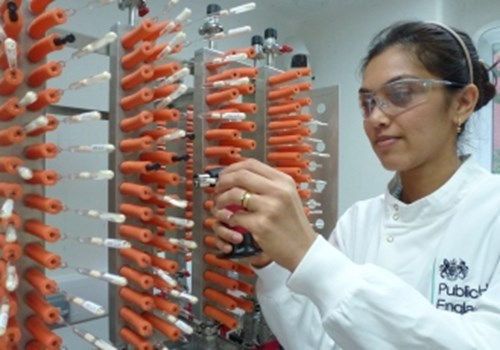Blood, sweat and sequencing – NCTC in 2017

A collaborative study by researchers in Thailand and the UK identified a novel antibacterial peptide derived from Crocodylus siamensis haemoglobin that causes bacterial death1. This finding was revealed in one of the 175 publications we reviewed, published on line between 1st January and 31st December 2017 that cite the use of NCTC strains and/or data. Our analysis reveals the extent of the global hunt for new compounds to combat antimicrobial resistance.
Researchers around the world determined the antimicrobial effectiveness of compounds extracted from fruits in Turkey2, seeds in Sudan3, cloves in Macedonia4, leaves in Fiji5 and Brazil6, lichens in Serbia7 and the skin secretions of the South American orange-legged leaf frog8 in China.
Understanding the mechanisms of antimicrobial resistance is paramount if scientists are to overcome this challenge and whole genome sequencing (WGS) technology plays an important role. A Swedish study investigated the genomic and phenotypic characteristics of Swedish water isolates of Campylobacter jejuni, using NCTC 11168, one of the most widely studied strains of C.jejuni, a leading cause of human diarrhoeal illness9.
One of the first studies in the UK that makes use of the WGS data generated by the NCTC3000 project, a collaboration between NCTC, the Wellcome Sanger Institute and Pacific Biosciences, provides new genomic understanding of the pathogenicity of Clostridium perfringens, a significant cause of intestinal diseases in humans and animals10.
Combatting healthcare associated infections, improving food and water safety, veterinary challenges, method evaluation and development, and understanding taxonomy, bacterial relatedness and microbial evolution all featured in our review. And importantly for Public Health England, this confirms that NCTC strains help researchers provide evidence for many activities designed to improve and protect people’s health.
References
- Lueangsakulthai J, Jangpromma N, Temsiripong T, McKendrick JE, Khunkitti W, Maddocks SE, et al. A novel antibacterial peptide derived from Crocodylus siamensis haemoglobin hydrolysate induces membrane permeabilization causing iron dysregulation, oxidative stress and bacterial death. Journal of applied microbiology. 2017;123(4):819-31.
- Demirbas A, Yilmaz V, Ildiz N, Baldemir A, Ocsoy I. Anthocyanins-rich berry extracts directed formation of Ag NPs with the investigation of their antioxidant and antimicrobial activities. Journal of Molecular Liquids. 2017;248:1044-9.
- Nasraldeen Abdalaziz M, Ali M, I Garbi M, Abdalbagi Dafalla M, Kabbashi A. In-vitro Antimicrobial, Anti-oxidant Activities and Cytotoxicty of Carum carvi L2017.
- Natalija Atanasova-Pancevska1 JB, Dzoko Kungulovski. In Vitro Antimicrobial Activity and Chemical Composition of Two Essential Oils and Eugenol from Flower Buds of Eugenia caryophyllata. Open Biological Sciences Journal 2018;Volume 3:16-25.
- Maharaj PPP, Devi R, Prasad S. Antimicrobial effect of essential oils of some Fijian medicinal plant leaves on pathogenic bacteria. The South Pacific Journal of Natural and Applied Sciences. 2017;34(2):35-9.
- Tenfen A, Siebert DA, Spudeit D, Cordova C, Micke GA, Alberton MD. Determination of phenolic profile by HPLC-ESI-MS/MS and antibacterial activity of Eugenia platysema against mollicutes strains2017. 7-11 p.
- Zlatanović I, Stanković M, Jovanovic VS, Mitić V, Zrnzević I, Đorđević A, et al. Biological activities of Umbilicaria crustulosa (Ach.) Frey acetone extract. J Serb Chem Soc. 2017;82(2):141-50.
- Huang L, Chen D, Wang L, Lin C, Ma C, Xi X, et al. Dermaseptin-PH: A Novel Peptide with Antimicrobial and Anticancer Activities from the Skin Secretion of the South American Orange-Legged Leaf Frog, Pithecopus (Phyllomedusa) hypochondrialis. Molecules. 2017;22(10):1805.
- Nilsson A, Johansson C, Skarp A, Kaden R, Engstrand L, Rautelin H. Genomic and phenotypic characteristics of Swedish C. jejuni water isolates. PloS one. 2017;12(12):e0189222.
- Kiu R, Caim S, Alexander S, Pachori P, Hall LJ. Probing genomic aspects of the multi-host pathogen Clostridium perfringens reveals significant pangenome diversity, and a diverse array of virulence factors. Frontiers in microbiology. 2017;8.
